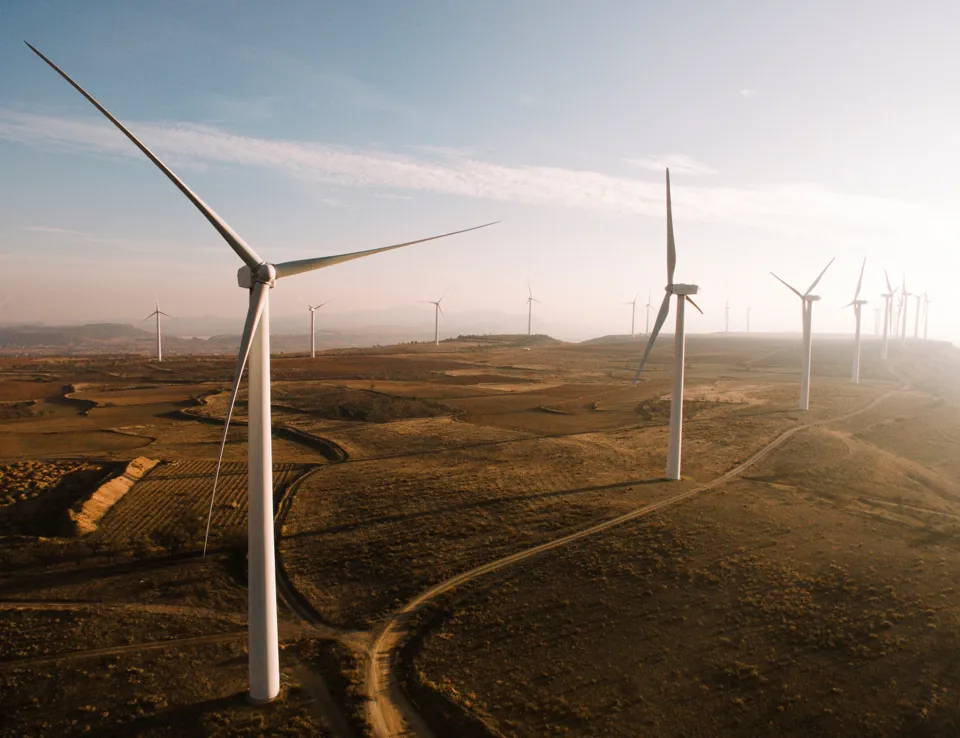
How Ricardo's carbon capture policy strategy and technology innovations can support net zero goals
19 Oct 2021
The UK Prime Minister, Boris Johnson, has described COP26, the climate summit taking place in Glasgow in November as the: “turning point for humanity.” He has urged world leaders to take responsibility for curbing global warming by making commitments in four key areas: coal, cars, cash and trees.
As part of its mission to support the decarbonisation of the global transport and energy sectors, Ricardo is leading a consortium that is designing a community scale greenhouse gas removal system which uses sustainably sourced waste wood from the timber industry. Funded by the Net Zero Innovation Portfolio, the consortium combines the hot air turbine technology from Bluebox Energy, which provides renewable energy to homes, business parks and agriculture, with Ricardo’s expertise in carbon capture technologies and 100-year track record in engine development. The consortium is developing highly innovative greenhouse gas removal technology, which will also provide renewable heat and electricity for towns, villages and agriculture. Ricardo has been collaborating with Bluebox Energy since June 2020 to deliver innovative new low carbon technologies that support the transition to a low carbon future.
Here, Dr Naser Odeh, Ricardo Head of Carbon Capture, considers why negative emissions solutions are essential to meet net zero emissions goals, discusses carbon capture, use and storage, and gives his overview of Ricardo’s credentials in advising governments on the potential of bioenergy with carbon capture, tackling climate change and meeting national net zero targets.
Q: As the UK prepares to host COP26 in November, why will we see an increasing focus on the need for negative emissions solutions if the UK is to meet net zero emissions by 2050?
Naser Odeh: “Following the Paris Agreement and subsequent report by the Intergovernmental Panel on Climate Change (IPCC) in 2018, CO2 removal from the atmosphere, through negative emission technologies (NETs) or greenhouse gas removal (GGR) options, has become high on the agenda in order to help achieve net zero targets by 2050. As highlighted by the Sixth Carbon Budget released in December 2020 by the Committee on Climate Change, nature-based greenhouse gas removals such as afforestation as well as engineered solutions including bioenergy carbon capture and storage (BECCS), biochar and direct air capture are essential if the UK is to meet net zero by 2050. The deployment of such solutions will play key role in offsetting residual emissions from hard-to-decarbonise sectors such as aviation and construction.”
Q: What is carbon capture, use and storage, and why does it offer such great potential in helping to meet net zero targets?
Naser Odeh: “Carbon capture, utilisation, and storage (CCUS) is a combination of technologies where carbon dioxide produced from power generation and industry is removed from flue gas and captured for further use and potentially permanent storage. The various elements of the carbon capture, utilisation and storage chain are well-established and have been used in industry for decades. For example, CO2 removal is an essential process in natural gas sweetening and in the chemical sectors is an essential process in the production of hydrogen and ammonia. In addition, carbon dioxide injection for enhanced oil recovery is a well-established process in the oil and gas industry. Moreover, thousands of kilometres of carbon dioxide pipeline exist worldwide, mainly in the US. However, the demonstration of the full CCUS chain in the power and industrial sectors to remove and capture carbon dioxide from stream with low concentrations of CO2 is at very early stage of development with many technical, financial and regulatory challenges still to overcome.”
“It is now well-recognised that the adoption of carbon capture technology is crucial for meeting the Paris Agreement’s goal of limiting the rise in the global temperature to well below 2 degrees Celsius (2°C). The technology offers one of the few means of dealing with large, stationary emitters of CO2. There is then an urgent need to demonstrate the full carbon capture, utilisation and storage chain on such large stationary sources.”
“Three of the four 1.5 degrees Celsius (1.5oC) pathways and almost all scenarios presented by the IPCC in 2018 include carbon capture, utilisation and storage. In these three pathways, bioenergy carbon capture and storage (BECCS) is clearly shown as necessary in order for temperature rise to be limited to 1.5 degrees. This shows the important role CCUS can play and why demonstration programmes need to be established and accelerated through the 2020s.”
Q: How can community scale energy production schemes like this project, play a significant role in cutting carbon emissions and actively contributing to the circular economy, not just in the UK but around the world?
Naser Odeh: “Ricardo’s latest study for BEIS on analysing the potential of BECCS in the UK to 2050 highlighted the key role that this technology can play a greenhouse gas removal solution but also its role in creating jobs and added value to the UK. The study highlighted that community scale decentralised BECCS systems can also play a role but with many technical and economic challenges to be overcome.”
“The advantage of a community scale biomass-based greenhouse gas removal system is that it can be located closer to the feedstock thus significantly reducing life cycle impacts and upstream emissions. Such affordable systems can also be conveniently located where demand is. For example, the system Ricardo and Bluebox Energy are developing offers the opportunity of supplying biochar as well as commercial grade carbon dioxide as well as heat and electricity which all can be used onsite depending on demand and type of application.”
“Furthermore, community scale carbon capture system can play an important role in helping progress and speed up the demonstration of the carbon capture and utilisation chain without relying on and waiting for the completion and development of a large and complex transport and storage (T&S) infrastructure. The T&S infrastructure development is ultimately necessary to develop the full CCS chain and achieve the anticipated significant impacts of BECCS but this will take time and large investments as well as a robust regulatory regime to be in place.”
Q: What are the key benefits of the Ricardo-Bluebox technology in terms of creating ‘marketable products’ which also sequester carbon?
Naser Odeh: “A community small scale CO2 capture system such as the one being developed by Ricardo and Bluebox Energy provides the opportunity to supply carbon dioxide in addition to electricity and heat on site. The system being developed here is a pyrolysis system and so biochar is also produced in the process. Biochar is desirable for soil reconstruction, as animal feed and also for use in anaerobic digestion as well as other emerging markets. Biochar in this way can potentially provide a means for permanent storage of carbon.”
“The recent shortages in carbon dioxide supply make such small-scale systems very desirable for sites where there is high demand for carbon dioxides from a commercial point of view, while also supplying electricity and heat for example. Greenhouses, abattoirs, food and drink manufacturing sites are only a few examples of where carbon dioxide can be utilised. Additional market opportunities are also provided by emerging applications such as concrete curing, green cement and synthetic fuels where carbon dioxide can be utilised and, in some cases, permanently stored.”
Q: Could the UK be at the forefront of community-scale carbon capture technology on the global stage? Do you have a sense of how many plants could be in operation in the UK, and how soon, to start making a difference to emissions?
Naser Odeh: “The UK has an opportunity to become a leader in commercialising decentralised small scale CO2 capture systems which can also be designed to be negative emission technologies when combined with sustainably-sourced biomass. Small community scale systems offer several advantages but many technical, economic, and commercial challenges which need to be overcome before they become a reality. Support for developing the technology is needed in the early stages to reduce costs and overcome technical challenges and to help develop the supply chain. This will help the UK become a leader in this technology which can be deployed and exported for many applications worldwide. We envisage that by the second half of the 2020s, the deployment of such systems will accelerate leading to greenhouse gas removal and significant emission savings thus making important contribution to net zero targets.”




 Follow Ricardo plc for regular updates
Follow Ricardo plc for regular updates




